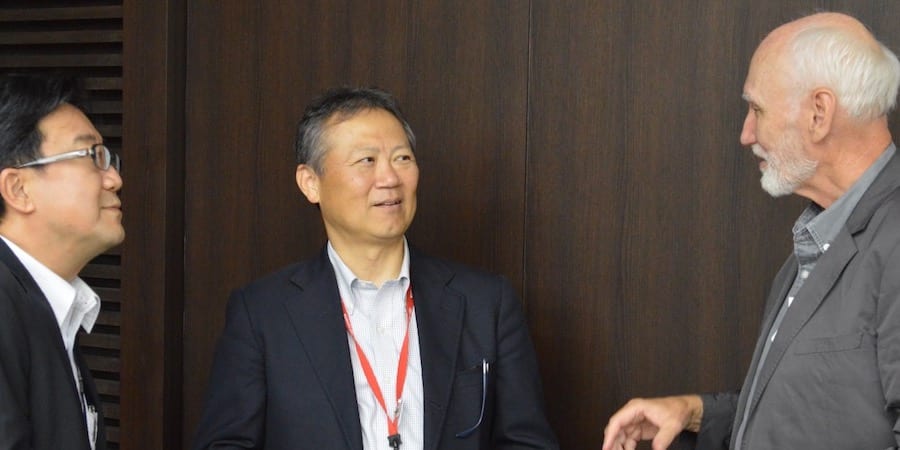
Better work: bringing lean thinking to a doctor's practice
FEATURE – Moving her assistant's workstation next to hers and introducing standardized work helped a family physician in California to provide better, faster care to her patients and to avoid burnout.
Words: Joann Falkenburg MD, Family Physician, Palo Alto Medical Foundation
Constant change and innovation in healthcare can be overwhelming and a significant source of burnout. When I graduated from medical school in 1994, home computing was evolving, and the Internet and email were new features in our daily lives. While they seemed great communication and shopping tools, I remember telling my friends I could not imagine using them in daily practice as a family physician. Fast forward 20 odd years, and electronic work is a third of my practice and one of the most valuable skills I've learnt is touch typing.
Fortunately, due to our transition to a lean operating system I now filter problems through a lean lens and use principles of measurement, load leveling, front-line improvement experimentation and PDSA (plan, do, study, adjust) to care for patients. Thanks to lean, I experience the joy of practicing medicine every day and have seen how a lean practice can prevent burnout.
The most significant change in our multi specialty practice (we have outpatient care facilities) was moving my workspace next to that of my medical assistant Mayela: being side by side means that our day is now characterized by real teamwork and that we accomplish much more working in a space that allows live communication.
The introduction of standard work streamlines patient flow and helps us identify potential "flowbusters" in our clinical day as well as plan for patient needs. We huddle for 15 minutes prior to patient care to anticipate each visit and prepare what will be needed (questionnaires, immunizations and other healthcare maintenance). We plan which patients will need questionnaires completed by Mayela (Medicare wellness and PHQ9 for depression). We identify who may need more intensive touch (the elderly, a disabled person needing an ADA table, a 4-year-old or 45-year-old afraid of immunizations).
Between visits we do face-to-face hand-offs in our shared workspace. This way I have a complete picture of the visit agenda going into the room and Mayela has complete information to discharge the patient. We both follow standard work in the room with the patient. Mayela follows a consistent rooming checklist and gathers detailed information for chronic care patients about diet, exercise and home monitoring. I refer to the agenda she shares in the warm hand-off, including lifestyle information. This creates time for motivational interviewing and shared decision making with patients.
The flow of medical care in the office has changed little since the 1950s, but we have added layers of new work as well as complexity. In our care redesign we referred to this as "a 900-pound gemba gorilla" that gets in the way of seeing patients and getting home on time.
Think about what's new in the last two decades: electronic medical record documentation, various tests, growing numbers and types of medications, formularies requiring navigation, insurance plans needing approval for referrals or tests, not to mention highly informed patients who research symptoms and conditions on the Internet.
Some parts of the electronic health record remain the same as during the paper chart days (phone calls, Rx refills and charts from specialists), but other communications are new and arrive with expectations from patients: in our fast-paced world many expect an email to be answered in a few hours or a lab to be completed as soon as it's drawn. Therein lies the challenge in a medical world that still compensates based on the visits and procedures completed during a face-to-face appointment.
We leveraged lean principles to tame the gorilla. First, we leveled the load. Mayela accesses my electronic inbasket to tee up telephone calls, prepare prescriptions, pend orders, answer emails within her scope of practice, review lab results and communicate to patients based on standard guidelines (e.g. Pap smears and mammograms). She manages paper communications and flags paperwork needing completion along with electronic items so that my modus operandi between visits is to complete chart documentation, close the chart, finish three flagged items and receive the hand-off on the next patient.
By maintaining flow, we approach the ideal at the end of the day: everyone (including me) goes home half an hour after the last patient discharge with all the work done! My evenings and weekends are free for family time, exercise, hobbies and continued learning. More than two decades into my career I am passionate about patient care and optimistic about our ability to face future challenges.
Our lean operating system provides better channels for communication within our department with daily huddles for information about access, staffing, and special circumstances (e.g. "the refrigerator is broken, here's where you'll find the vaccines!")
In addition, brief (25 minute) weekly meetings allow proactive planning for appointment access, staffing and schedule deployment as well as shared learning, front-line feedback and problem solving. Strategic deployment allows discussion of initiatives with front-line teams for feedback. Metrics are aligned and tiered so that we speak the same language vertically and horizontally in an organization with 1,400 physicians at more than 45 sites. Dashboards make performance visible for transparent discussions. A3 thinking and PDSA allow us to take our issues in hand to solve problems on the front line.
Finally, out of a desire to increase control over system work I've undertaken an experiment for my patient panel. You could call it the 200-pound gorilla in the gemba: lists of patients for review and outreach for insurance plans, health maintenance, Medicare visits and chronic care visits.
After creating a calendar with standard work for 15 minutes every day for each type of work, I'm learning to level the work across days and weeks and no longer feel victimized by the lists that come our way on a monthly basis. Now when the lists arrive we are already familiar with the patients and have often completed initial outreach. Schedule grooming creates capacity to care for more patients, adjust visits that need more time and correct errors before they disrupt patient care. The lean approach allows us control of our patient panel and promotes teamwork to get the work done.
For all these reasons, we'll keep learning and fine tuning our lean toolset, skills set and mindset. It is the key to overcoming our challenges in healthcare and avoiding the burnout that is rampant in medicine today. Plus, "gorilla wrangler" is a pretty fun work title to add to our online social networks.
THE AUTHOR

Read more


WOMACK'S YOKOTEN - Kaizen or kaikaku? This is the problem. When it comes to the pace of change, should we carry on with small, incremental improvements or aim at more revolutionary changes instead?


FEATURE – In this frank account, a senior executive discusses the challenges facing an oil and gas company as it tries to manage the complexity of its upstream and downstream supply chains.



INTERVIEW – For its 10th anniversary, the Lean Global Network went to Japan for a study mission. Our editor spoke with John Shook on a Shinkansen platform after four days in Toyota City and Nagoya.


FEATURE – This year, PL will try to understand what the future of work looks like in a world with AI. To kick us off and make us think, we publish an article that is the result of a one-hour conversation between a human and a machine.

